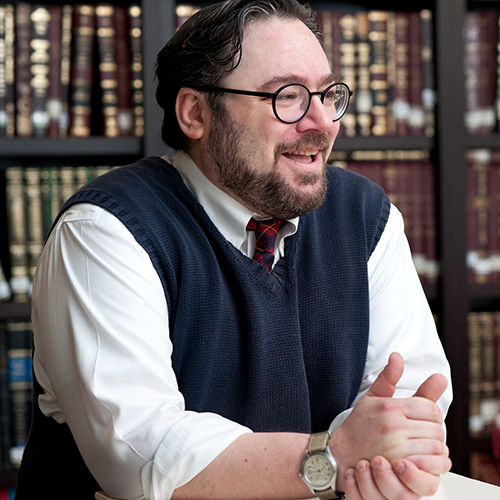Mishnah Shabbat 7:2

The primary labors [melakhah forbidden on Shabbat] are forty less one.
1. Sowing, plowing, reaping, binding sheaves, threshing, winnowing, selecting, grinding, sifting, kneading, and baking.
2. Shearing wool, bleaching, hackling, dyeing, spinning, stretching the threads, the making of two meshes, weaving two threads, dividing two threads, tying [knotting] and untying, sewing two stitches, and tearing in order to sew two stitches.
3. Capturing a deer, slaughtering, or flaying, or salting it, curing its hide, scraping it [of its hair], cutting it up, writing two letters, and erasing in order to write two letters [over the erasure].
4. Building, pulling down, extinguishing, kindling, striking with a hammer, and carrying out from one domain to another.
These are the forty primary labors less one.
|
The primary labors [melakhah forbidden on Shabbat] are forty less one. |
|
1. Sowing, plowing, reaping, binding sheaves, threshing, winnowing, selecting, grinding, sifting, kneading, and baking. |
|
2. Shearing wool, bleaching, hackling, dyeing, spinning, stretching the threads, the making of two meshes, weaving two threads, dividing two threads, tying [knotting] and untying, sewing two stitches, and tearing in order to sew two stitches. |
|
3. Capturing a deer, slaughtering, or flaying, or salting it, curing its hide, scraping it [of its hair], cutting it up, writing two letters, and erasing in order to write two letters [over the erasure]. |
|
4. Building, pulling down, extinguishing, kindling, striking with a hammer, and carrying out from one domain to another. |
|
These are the forty primary labors less one. |
אבות מלאכות ארבעים חסר אחת:
1. החורש, והזורע, והקוצר, והמעמר,
והדש, והזורה, והבורר, והטוחן, והמרקד,
והלש, והאופה,
2. הגוזז את הצמר, והמלבנו, והמנפצו, והצובעו, והטווהו, והמסך, והעושה שני בתי נירין, והאורג שני חוטין, והפוצע שני חוטין, הקושר, והמתיר, והתופר שתי תפירות, והקורע על מנת לתפור שתי תפירות,
3. הצד צבי, והשוחטו, והמפשיטו, והמולחו, והמעבדו, והמוחקו, והמחתכו, הכותב שתי אותות, והמוחק על מנת לכתוב שתי אותות,
4. הבונה, והסותר, המכבה, והמבעיר, והמכה בפטיש, והמוציא מרשות לרשות
–הרי אלו אבות מלאכות ארבעים חסר אחת.
We have already seen part of the list of thirty-nine forbidden labors of Shabbat contained here in Mishnah Shabbat 7:2. Here is the list in full. At first it looks as if the list is just a compendium of labors commonly performed in the ancient world. On closer inspection, we see that the list falls nicely into four categories of labor. We have already seen that the Talmud (Shabbat 74b) refers to the first of these groupings as sidura d’pat, the order of making bread. We see here that the mishnah also views the labors leading up to the production of clothing (group two), those used in producing scrolls (group three), and those needed to construct shelter (group four), as prohibited by Torah.
On the one hand, our mishnah might have made these groupings for mnemonic reasons. It is easier to remember a list of thirty-nine items if we can pin them to a narrative: the thirty-nine forbidden labors on Shabbat are all those we do when we make bread, make clothing, make scrolls, and make shelter. Indeed, this can be a very helpful check for us as we go about our own practice of Shabbat-if a labor fits into one of these four groupings, we should be aware that it falls outside the sacred boundaries of Shabbat.
One the other hand, these groupings give us a good description of basic human needs: food, clothing, shelter, and the need for intellectual and spiritual growth (for we do not live by bread alone). The message here seems to be that Shabbat should give us a taste of a world in which we do not have to work to fulfill all our needs. Indeed, our Sages call Shabbat me’ein ‘olam haba: a paradigm of the world to come. In a redeemed world, we would not make our bread by the sweat of our brow. But to make Shabbat work in this way, we must work in advance: our homes must be prepared, our cooking must be done, our clothes made ready, and the Torah must rest in the ark.
The same is true of a redeemed world. May we all use Shabbat as a motivating force to energize us to take steps to fix our broken world. Together, we can do it.
Questions:
- Why do you think the Mishnah put the labors used in constructing shelter last? Wouldn’t it have made more sense to put the making of scrolls last?
- How can we use Shabbat as a key element in our quest to redeem the world?



